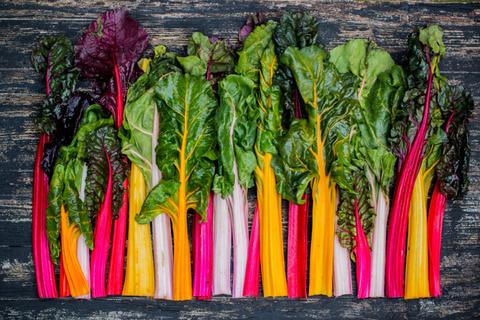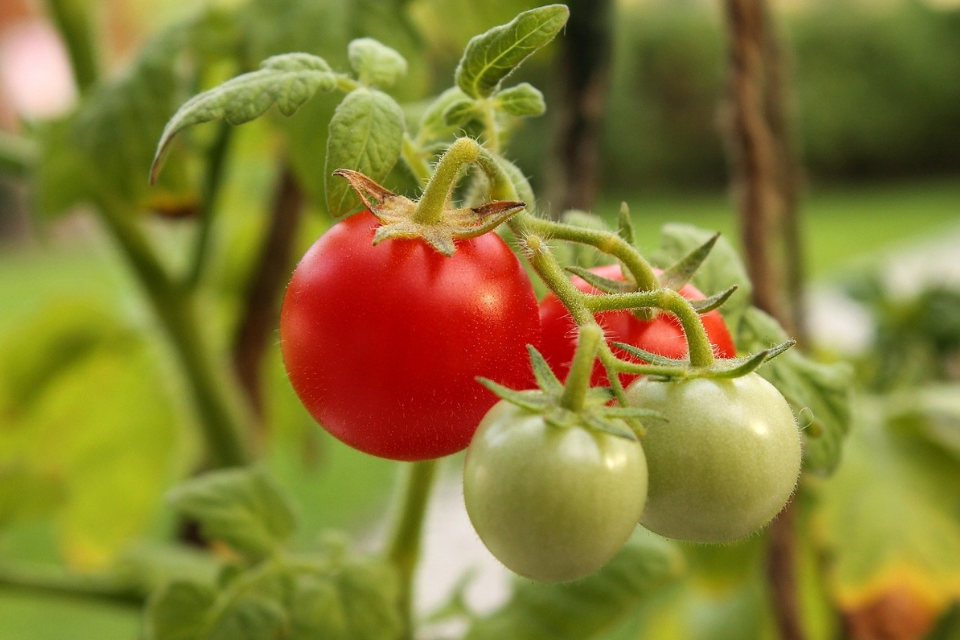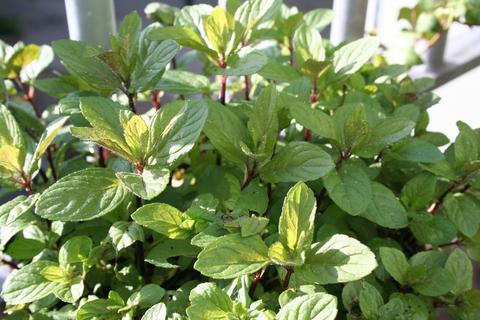Looking for some great starter crops for your vertical garden? These herbs and salad greens are so easy to grow that even the kids can get involved.
Don't want to waste precious time and money on finicky plants that don't survive long enough to enjoy? We thought not. If you’re going to be investing in a vertical herb garden, it’s nice to know that there are certain hardy crops that won’t let you down - especially if you’re new to vertical gardening.
Whether you’re planting a green wall, or planting in traditional pots, even small children can enjoy a full harvest from these easy to nurture crops.
HERE’S 9 “NO-FAIL” CROPS THAT YOU NEED IN YOUR FIRST VERTICAL GARDEN

1. Chives
Chives are perennials (meaning they live for several years) which are best planted in early Spring. A staple ingredient in dips and salads, chives are a versatile crop to have on hand. They have a mild, onion flavor (you also get a garlic variety) and a pretty lilac blossom. Chives like full sun, so they do best outdoors, however, they can do well indoors if planted near a window which gets good sunlight throughout the day. For the highest possible yield, you need to keep your plants moist (by adding mulch to your pots) and add fertilizer from May to July while they’re flowering.
The entire plant (including the blossoms) is edible. You’ll be able to harvest your chives every three to four months in the first year, and monthly after they’ve matured. You can freeze any excess crops in airtight containers to make sure nothing goes to waste. Chives aren’t suitable for drying as they lose their flavor.
2. Cilantro
Cilantro(also known as Coriander or Dhania) is an annual herb (meaning it only lives for a single year cycle), which is best planted in Fall. Cilantro refers to the leaves of the plant, while Coriander refers to the seeds (used as a spice in things like curry).
Studies show that there could be a link between your DNA and your taste preferences. While some find Coriander and Cilantro to have an exotic, aromatic flavor, others get a nasty shock - much like biting into a piece of soap. For those who just can’t stomach the taste of scent of Coriander, you can thank a receptor in your genetic make up (OR6A2), which the rest of us don’t possess. OR6A2 is sensitive to aldehydes (a specific compound found in Coriander) which changes how you experience its flavor.
3. Lettuce
Lettuce is a cool-season crop, which grows well during Spring and Fall. Most varieties of lettuce are annual, however you do get a couple of perennial varieties.
Organic, home-grown lettuce is tastier and healthier than regular store bought varieties, as it contains a much higher vitamin A content. Lettuce grows fastest in full sun, but if you live in a particularly hot region, you’ll want to place your green wall somewhere that gets a little afternoon shade.
Lettuce requires regular water to stay crisp, so it’s a good idea to add mulch to you pots. This will ensure that you harvest tender, succulent and tasty leaves for sandwiches and salads.
4. Mint
Mint is a fragrant (and extremely hardy) perennial. You can get all sorts of varieties from pineapple mint to chocolate mint, all with unique scents and flavors. Mint can be used in many different dishes and can add a refreshing blast to teas or water. And the best part? Mint is one of the easiest plants to grow!
Mint grows best outdoors in full sun and needs to be watered regularly. It is however, very low maintenance and can easily be propagated by planting cuttings from the plant into a new pot or container.
5. Parsley
Parsley is a biennial (takes two years to complete a life cycle) member of the Dill family. It’s a dynamic herb, and is used extensively in dishes from sauces to soups, salads and stews. Fresh parsley is also perfect to use as a garnish, and lessens the need for salt in a dish. It’s rich in iron, vitamin A and vitamin C.
Parsley requires full sun and grows best outdoors. If you’re going to plant it inside, make sure it gets at least five hours of sun per day. Parsley can be harvested, dried out, and stored.
6. Rocket
Rocket (also known as Arugula) is a perennial. It packs a peppery punch, and can spice up a salad beautifully. It goes well with cheeses (particularly blue cheese) and is a popular ingredient in French and Italian cuisine.
Rocket grows fast, and likes moderately sunny conditions. If you live in a particularly hot region, you’ll need to ensure that you place your green wall somewhere that gets some shade in the afternoons. Plant your rocket in early Spring for the best possible harvest. It flowers in early Summer, during which time the plant’s flavor becomes far more intense. Harvest your rocket from the outer leaves, leaving the inner leaves intact - this will encourage the plants to fill out, leading to higher yields throughout the season.
7. Spinach
Spinach is an annual crop, that’s part of the Beet and Swiss Chard family. It’s packed full of vitamins and minerals, and is a hearty addition to your diet. It’s also very easy to grow.
Although it likes full sun, Spinach does better in cooler climates, so the best time to plant your Spinach is during Fall, as the days begin to shorten and temperatures begin to drop.
Spinach needs to be watered regularly, just like lettuce. If you notice the leaves on your plants looking soft or limp, this is a good indication that they need to be watered more frequently.
If you’re not sure how often you should be watering your green wall, read our article on overwatering vs. underwatering, where we discuss how to perform a moisture test and determine the right watering schedule.
8. Swiss Chard
Swiss Chard is related to Spinach, and the two can easily substitute each other in recipes. Although it’s actually an annual plant, Swiss Chard can sometimes behave like a perennial when looked after well. It likes full sun, and should be planted in early Spring or Fall (just like Spinach). The plant comes in many different colored varieties, and is one of the most glamourous of the leafy greens.

Image source: Paleo Plan
Swiss Chard doesn’t ship well, which makes is difficult to find in the grocery store - all the more reason to plant it in your vertical garden.
9. Thyme
There’s no need to be nervous when starting your first vertical garden, every gardener was a beginner once. By starting with some low-maintenance, hardy crops like these, you’ll have a lush, productive green wall in no time.




